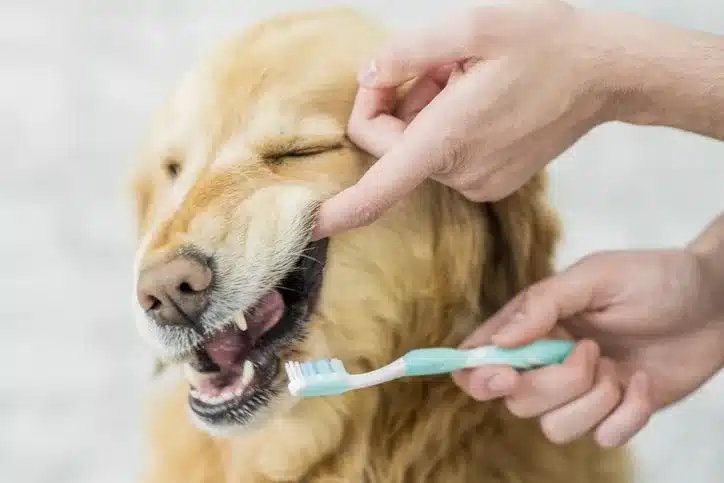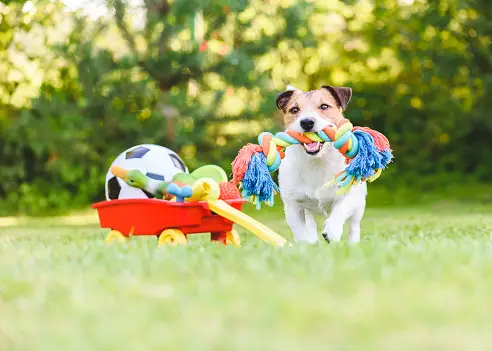Just like humans, dogs can also suffer from dental problems that can lead to discomfort and serious health issues if left untreated. By recognizing the signs of oral health issues in your dog, you can take proactive steps to ensure their overall well-being. In this article, we will discuss the common signs of dog dental problems and provide useful tips on how to address and prevent them.
Common Dental Problems in Dogs
Gum Disease
Gum disease, also known as periodontal disease, is one of the most common dental problems in dogs. It starts with the buildup of plaque and tartar on the teeth, leading to bacterial infection and inflammation of the gums. If left untreated, gum disease can progress and cause severe oral health issues for your furry friend.
Some signs of gum disease in dogs include:
- Red, swollen, or bleeding gums
- Bad breath
- Excessive drooling
- Difficulty eating or chewing
- Loose teeth
Regular dental care, including brushing your dog’s teeth and providing dental treats or toys, can help prevent gum disease. However, if you notice any signs of gum disease, it is crucial to consult your veterinarian for proper diagnosis and treatment.
Tooth Decay
Tooth decay, also referred to as dental caries or cavities, can affect dogs just like humans. It occurs when bacteria in the mouth produce acids that eat away at the tooth enamel, leading to the formation of holes or cavities in the teeth. Poor oral hygiene, sugary diets, and certain medications can contribute to tooth decay in dogs.
Common signs of tooth decay in dogs include:
- Discolored or stained teeth
- Chipped or broken teeth
- Sensitivity or pain while eating
- Pawing at the mouth
- Reluctance to chew on toys or bones
If left untreated, tooth decay can cause pain, infection, and even tooth loss. Regular dental check-ups and professional cleanings can help prevent tooth decay. In severe cases, your veterinarian may recommend dental procedures such as fillings or extractions to address the issue.
Tooth Loss
Tooth loss is another significant dental problem that dogs can experience. It can result from advanced gum disease, tooth decay, trauma, or other underlying health conditions. Missing teeth not only affect a dog’s ability to chew food properly but can also lead to further oral health complications.
Signs of tooth loss in dogs may include:
- Gaps or spaces between teeth
- Difficulty picking up food or dropping it while eating
- Changes in chewing behavior
- Swelling or inflammation in the mouth
- Irritability or reluctance to be touched around the mouth area
If your dog has lost a tooth, it is important to visit your veterinarian to determine the cause and discuss potential treatment options. In some cases, dental implants or other dental procedures may be necessary to restore your dog’s oral health and overall well-being.
Taking care of your dog’s dental health is essential to ensure their overall health and happiness. Regular dental check-ups, proper oral hygiene, and a balanced diet can help prevent common dental problems in dogs and maintain their oral health for years to come.
Symptoms of Dog Dental Problems
Bad Breath
One of the most common symptoms of dog dental problems is bad breath, also known as halitosis. If your furry friend’s breath has an unpleasant odor, it could indicate oral health issues. The foul smell is usually caused by the buildup of bacteria in the mouth, which can result from poor dental hygiene or the presence of dental disease. Regular brushing and professional dental cleanings can help alleviate bad breath and prevent further complications.
Excessive Drooling
Excessive salivation or drooling can be a sign of dog dental problems. While it is normal for dogs to drool to some extent, an increase in drooling may indicate oral health issues. Dental diseases such as gum inflammation, tooth decay, or infections can cause discomfort and lead to excessive drooling. If you notice that your dog is drooling more than usual, it is important to have their oral health examined by a veterinarian to diagnose and treat any underlying dental problems.
Difficulty Eating
If your dog is experiencing difficulty while eating, it could be a symptom of dental problems. Dogs with oral health issues may exhibit behaviors such as chewing on one side of the mouth, avoiding hard food, or dropping food while eating. Dental diseases, such as gum disease or tooth abscesses, can cause pain and make it uncomfortable for dogs to chew their food properly. If you observe any changes in your dog’s eating habits or notice they are having trouble eating, it is crucial to have their dental health evaluated by a veterinarian to address any potential dental problems.
Remember, regular dental care and professional check-ups are vital to maintain your dog’s oral health and prevent dental problems.
Preventing Dog Dental Problems
Regular Brushing
Regular brushing is an essential part of maintaining your dog’s oral health. Just like humans, dogs need their teeth to be brushed regularly to prevent the build-up of plaque and tartar. By brushing your dog’s teeth at least two to three times a week, you can significantly reduce the risk of dental problems.
To brush your dog’s teeth, it’s important to use a toothbrush and toothpaste specifically designed for dogs. Never use human toothpaste as it can be toxic to dogs. Gently lift your dog’s lips and brush in circular motions, focusing on the outer surface of the teeth. Gradually introduce tooth brushing to your dog from a young age to make it a positive experience for them.
Dental Chews and Toys
In addition to regular brushing, dental chews and toys can be effective in preventing dog dental problems. Chewing on appropriate dental chews and toys helps to scrape away plaque and tartar, promoting better oral hygiene. These specially designed chews and toys not only provide entertainment for your dog but also contribute to their overall dental health.
When choosing dental chews and toys, opt for those specifically formulated to improve oral health. Look for products with a texture that helps to clean your dog’s teeth as they chew. Additionally, ensure that the size and hardness of the chew or toy are suitable for your dog’s age, size, and chewing strength.
Professional Dental Cleanings
Regular professional dental cleanings are a crucial part of preventing dog dental problems. While regular brushing and chewing can help maintain oral hygiene, professional cleanings are necessary to address any underlying issues and ensure a thorough cleaning.
During a professional dental cleaning, a veterinarian will perform a comprehensive examination of your dog’s teeth and gums. They will remove any plaque, tartar, and bacteria that may have built up over time. Additionally, the veterinarian will check for any signs of dental problems such as gum disease, tooth decay, or oral infections.
Remember, by incorporating regular brushing, providing dental chews and toys, and scheduling professional dental cleanings, you can significantly reduce the risk of dog dental problems and ensure your furry friend’s oral health.
Recognizing and addressing dog dental problems is crucial for their overall oral health and general well-being. By paying attention to the signs and symptoms discussed in this article, dog owners can identify potential oral health issues early on and take appropriate action. Regular dental check-ups, proper oral hygiene practices, and a balanced diet can help prevent and alleviate dental problems in dogs. Remember, a healthy mouth leads to a happy and thriving dog. So, let’s prioritize their dental care and ensure they enjoy a lifetime of strong teeth and fresh breath.







